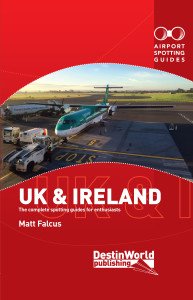
Recently I had the pleasure of shadowing staff at London City Airport to see what goes on behind the scenes this at busy Docklands airport in the middle of the city.
In the first post, I shadowed the opening of the airport with the Controllers in the Ops Room. In the second I visited the Ramp Control Team as they monitored and planned each aircraft operation.
In this final post, I talk to Geraldine Nolan, Corporate Communications Support, about the vision, airline operators, and the future of London City.
London City History
London City Airport opened in 1987 on a former dock in the East London borough of Newham. Its location, only six miles from the City and Canary Wharf, was key in that it provided close connections to the heart of London, allowing business travellers to fly to European cities with speed and ease not offered by Heathrow or Gatwick. The development of the Docklands Light Railway (DLR), with a station at the airport, also allowed easy access to the city’s transport network.
The airport’s short runway meant only certain aircraft types could operate into the airport, and thus range and passenger capacity were limited. The runway was later extended to 1,500m (4,900ft) and a holding area was added to improve the flow of aircraft. The glideslop to the runway was also reduced to 5.5 degrees (from 7.5), however this is still steep enough to require special certification for pilots and aircraft operating into the airport.

London City Today
Today, London City is still primarily a business airport. Geraldine explains that approximately 65% of passengers travel for this reason. However, 35% are leisure passengers – a figure which has risen recently due to the addition of numerous routes by BA CityFlyer to holiday destinations such as Ibiza and Palma.

The largest aircraft currently certified to fly into London City are the Airbus A318 and Embraer 190. Recently, all stands have been realigned to cope with the E190 as more airlines have introduced it. The A318s, used by British Airways on their twice weekdaily New York JFK route (via Shannon) exclusively use the extended stands at the eastern end of the apron.

The airport’s terminal has been extended and improved over recent years, with a particular emphasis on the needs of its business passengers. As a result, there are no dedicated business lounges (however, a small lounge does exist for the New York flight).
Current operations to around 40 destinations are dominated by BA CityFlyer, who operate EMB170/190, and Saab 2000 aircraft. Other principal carriers include Alitalia CityLiner (EMB175/190), Blue Islands (ATR42), British Airways (A318), CityJet (RJ85/100, F50), Lufthansa Regional (EMB190, Q400), Luxair (Q400), Scot Airways (DO328), Skywork (DO328), Swiss European (RJ85/100).
Estonian Air will also begin a new routes to Tallinn with EMB190 aircraft from March 2013.
A Jet Centre at the western end of the airport handles VIP movements, with its own parking apron for executive jets.

London City Future
The airport today handles around 3 million passengers per year and has worked hard to improve efficiency during peak periods. Geraldine explains “We have around 540 employees at the airport, with a further 1,500 employed at concessions and other businesses on the site.”
The future plan is to extend the airport further, adding more parking stands on piles along the largely redundant King George V Dock. It will remain a single-runway airport, however it is hoped that the airport will attain a capacity of 8 million passengers per year by 2030.
The airport has won numerous awards over recent years, and remains committed to its social responsibility, given its location amongst a built-up area. Its popularity is set to ensure the airport will continue to thrive as it moves forward with its expansion plans.
 Airport Spotting Guides UK & Ireland
Airport Spotting Guides UK & Ireland
All of the spotting highlights listed on this page and many more are in our new book, Airport Spotting Guides UK & Ireland.
This book details the best spotting locations at over 80 of the UK’s airports and airfields. It lists the best places for photography, driving and public transport instructions, and gives an indication of what aircraft and airlines you’re likely to see at each location. OUT NOW!





